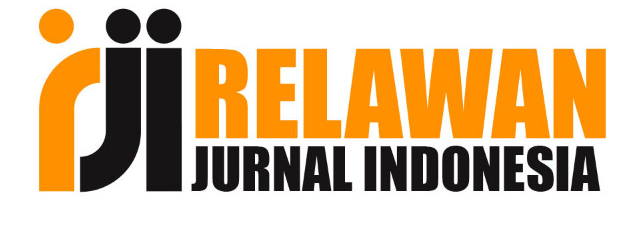Analisa Penerimaan Sistem Pembelajaran E-Learning Pada Masa Pandemic Menggunakan Structural Equation Model-Partial Least Square
DOI:
https://doi.org/10.36982/jiig.v12i2.1941Abstract
The Covid 19 pandemic has had a major influence on the order of human life at this time, including in the world of education. Teachers and educators as essential elements in teaching are required to undertake an unprecedented large-scale migration from traditional face-to-face education to online education or distance education. One of the learning systems used is the e-learning learning system. E-learning is a learning system that is carried out using electronic media. This research was conducted to test user acceptance of the e-learning learning system using the Technology Acceptance Model (TAM). TAM is an analytical model to determine user behavior regarding the acceptance of a technology Testing is done by measuring the influence between variables in the TAM model which includes the variables Perceived Ease of Use, Perceived Usefulness, Attitude Toward Using, Behavioral Intention, and Actual Usage. Testing the influence of factors is carried out using the Structural Equation Model (SEM) - Partial Least Squares (PLS). Evaluation data is obtained from questionnaires distributed to users of the e-learning system. The results show that there is a direct influence between perceived usefulness and perceived ease of use on user behavioral attitudes which have implications for behavioral intentions to use technology (e-learning). This means that users of the e-learning system have the perception that the e-learning system is easy to use so that users can accept the e-learning system and continue to use it in their daily lives
Â
Keywords : e-learning, Technology Acceptance Model, Structural Equation Model, Partial Least Squares
References
Akalili S.N, & Haryono. (n.d.). Analisis Pengaruh Tenaga Penjualan(Marketer) Terhadap Kepuasan dan Pengaruh Kepuasan Terhadap Rekomendasi Di Perumahan “X†Dengan Metode Structural Equation Modeling-Partial Least Square. 1–8.
Basilaia, G., & Kvavadze, D. (2020). Transition to Online Education in Schools during a SARS-CoV-2 Coronavirus (COVID-19) Pandemic in Georgia. Pedagogical Research, 5(4). https://doi.org/10.29333/pr/7937
Chin, W. (2017). Handbook of Partial Least Squares Concept, Methods, and Applications. Molecular Physics, 115. https://doi.org//10.1080/00268976.2016.1271155
Chin, W. W. (1998). The Partial Least Squares Approach to Structural Equation Modeling. Dalam G. A. Marcoulides, Modern Methods For Business Research. Lawrence Erlbaum Associates.
Davis, F. D. (1985). A technology acceptance model for empirically testing new end-user information systems: Theory and results. Management, Ph.D.(May), 291. https://doi.org/oclc/56932490
Fatmawati E. (2015). Technology Acceptance Model (TAM) untuk menganalisis penerimaan terasap sistem informasi perpustakaan. Jurnal Iqra.
Ghozali, I., & Latan, H. (2015). Partial Least Squares Konsep, Teknik dan Aplikasi Menggunakan Program SmartPLS 3.0 untuk Penelitian Empiris.
Gunawan, Suranti, N. M. Y., & Fathoroni. (2020). Variations of Models and Learning Platforms for Prospective Teachers During the COVID - 19 Pandemic Period. 1(2), 75–94.
Hair, J. E., Black, W. C., Babin, B. J., & Anderson, R. E. (2010). Multivariate Data Analysis, 7th Edition.
Komendangi, F., Molenaar, R., & Lengkey, L. (2017). Analisis Dan Perancangan Aplikasi E-Learning Berbasis Learning Management System (Lms) Moodle Di Program Studi Teknik Pertanian Universitas Sam Ratulangi. Cocos, 1(3).
Rahmawati, R. N., & Narsa, M. (2019). Actual Usage Penggunaan E-Learning dengan Technology Acceptance Model (TAM). 6(2), 127–136.
Santosa, I. (2018). Metode Penelitian Kuantitatif. Andi Publisher.
Sayekti, F., & Putarta, P. (2016). Penerapan Technology Acceptance Model (TAM) Dalam Pengujian Model Penerimaan Sistem Informasi Keuangan Daerah. Jurnal Manajemen Teori Dan Terapan, 9(3), 196–209.
Vinzi, V. E., Chin, W. W., Henseler, J., & Wang, H. (2010). Handbook of Partial Least Squares. Springer.
Wold, H. (20123). ). Partial Least Square. In G. A. Marcoulides, Modern Methods For Business Research. Psychology Press.
Downloads
Published
How to Cite
Issue
Section
License

This work is licensed under a Creative Commons Attribution-ShareAlike 4.0 International License.










